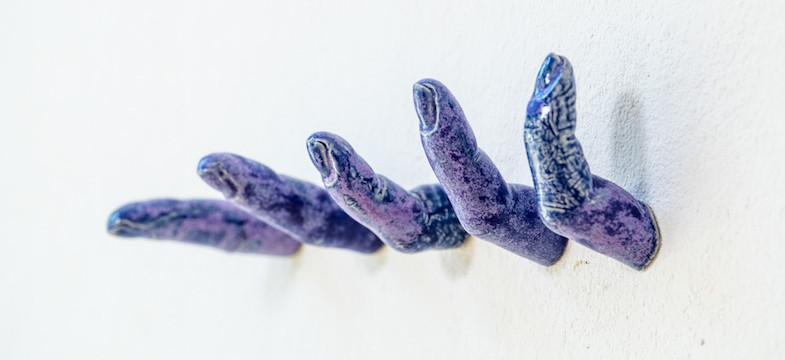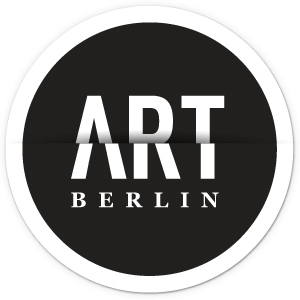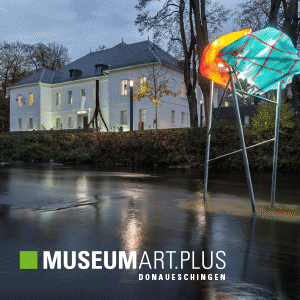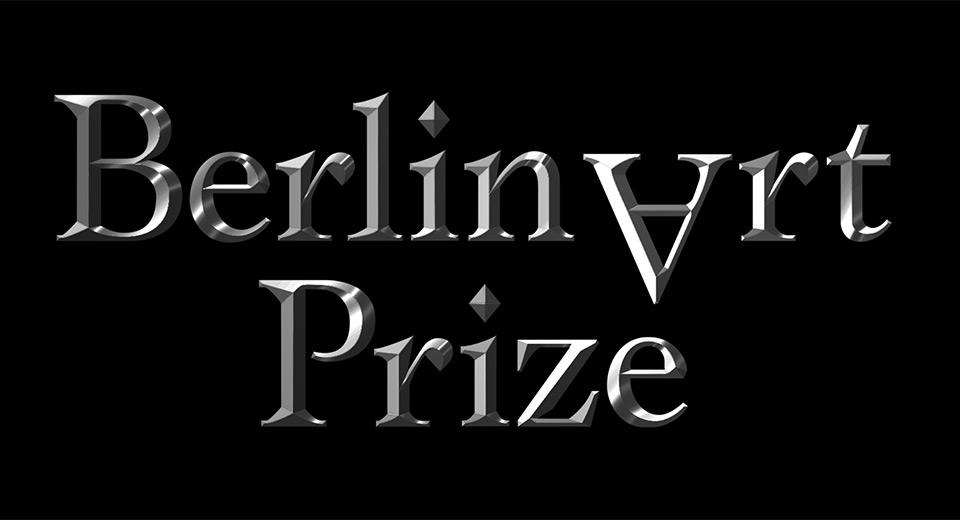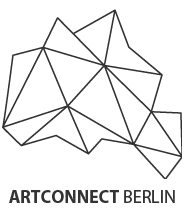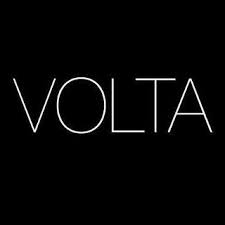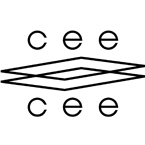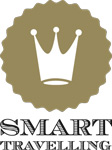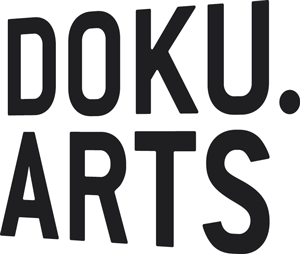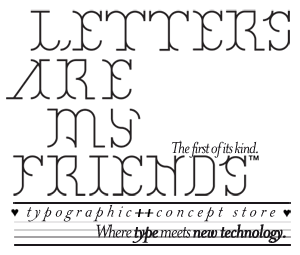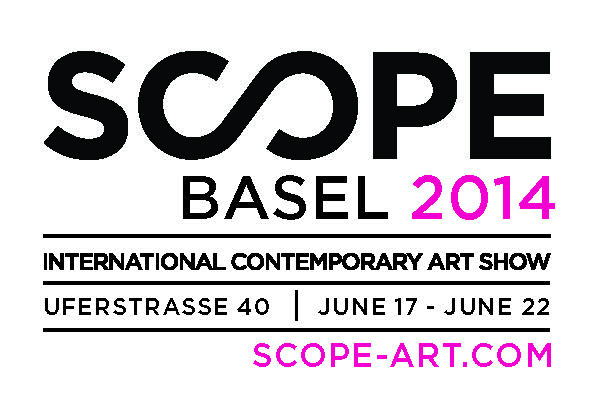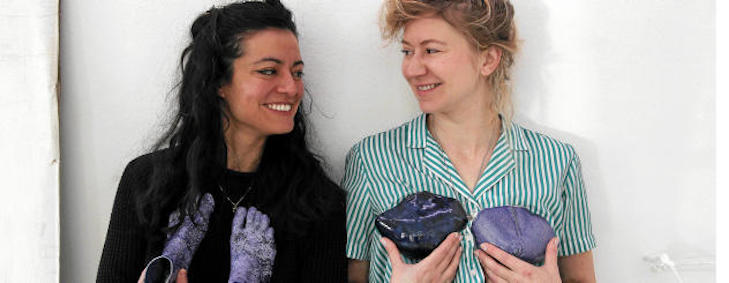
Juliana Cerqueira Leite & Zoë Claire Miller, Photo: Franziska Gräfenhan für die Thüringer Allgemeine
Juliana Cerqueira Leite (* Brasilien, lebt und arbeitet in New York) gewann noch während ihrer Ausbildung zur Bildhauerin in London den Kenneth Armitage Sculpture Prize und 2016 den Furla Art Prize der 5th Moscow International Young Art Biennial. Der eigene Körper ist Ausgangspunkt ihres künstlerischen Schaffens, das skulpturale Fragestellungen genauso behandelt wie Weiblichkeit, Sinnlichkeit und Lust.
Zoë Claire Miller (*1984 in Boston, Massachusetts, lebt und arbeitet in Berlin) studierte Philosophie, Anthropologie und romanische Sprachen in Heidelberg, und erwarb 2010 ihr Diplom in Bildhauerei an der Staatlichen Akademie für Bildende Künste, Karlsruhe. Miller ist Mitbegründerin des Berlin Art Prize, einer unabhängigen, jährlichen Auszeichnung für zeitgenössische Kunst. Als Bildhauerin arbeitet sie hauptsächlich mit Keramik und widmet sich besonders der Fragestellung von Kollaboration, Objekt und negativem Raum.
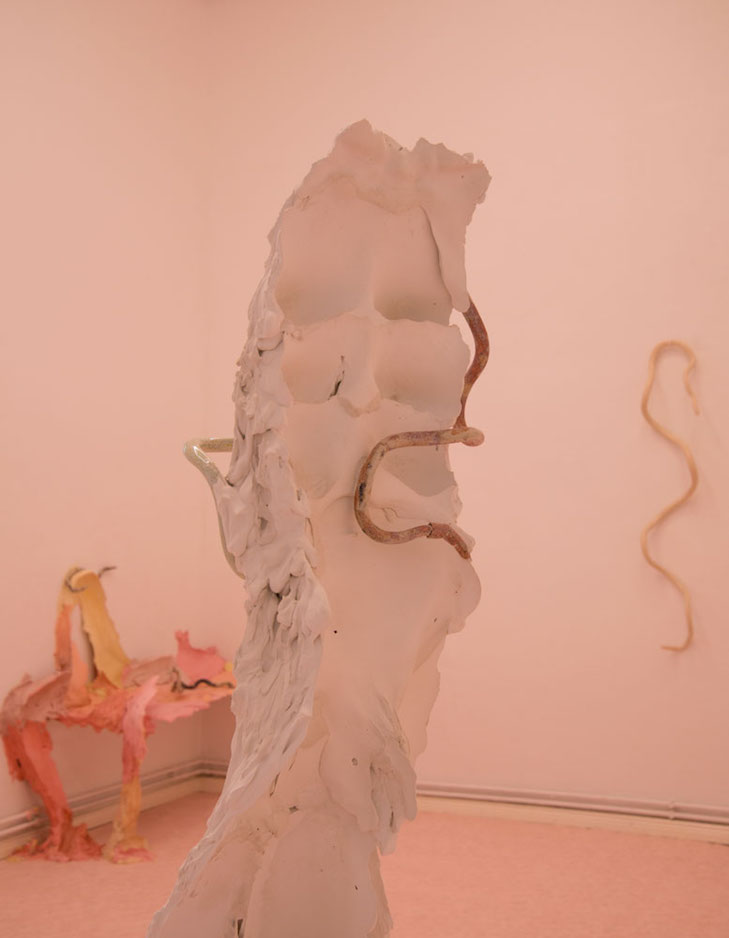
A Night with The Girls, Juliana Cerqueira Leite & Zoë Claire Miller, 2016, 147 x 42 x 28 cm, Plaster, glazed ceramic, metal, wooden base. Copyright of the artist
There are a many more notable and famous male friendships in art history as opposed to female friendships, women are more likely to appear alone on the scene. You are both individual sculptors but the body of work we are showing in our exhibitions “The Female Gaze – on Body, Love and Sex” I & II is something you did entirely together, a collaboration between two women. You have been doing this for a while now. How did it come about?
Zoe: I really enjoy collaboration and specifically with women, it’s a major part of my practice and has been such since quite a few years. Sometimes you feel like you have to constantly sidestep and duck to avoid getting slapped by dicks swinging through the air. We’re living in a patriarchal society, where so much space is given to men, especially in the art world.
Juliana: I think art history just doesn’t tell the stories of women working together as much as it focuses on male friendships and partnerships. I find that collaboration is a way of questioning the competitive, ego-driven rhetoric of the type of art world that privileges work by men. It’s not enough that we get more women artists’ works into Museums. I think there is a structural problem with the way art is thought about, and the exclusion of women is a symptom.
Zoe: I know so many men who really enjoy talking about themselves, their art, their career, their commercial success, while even the women who are doing really well don’t seem to enjoy showing off on this kind of competitive, verbal level.
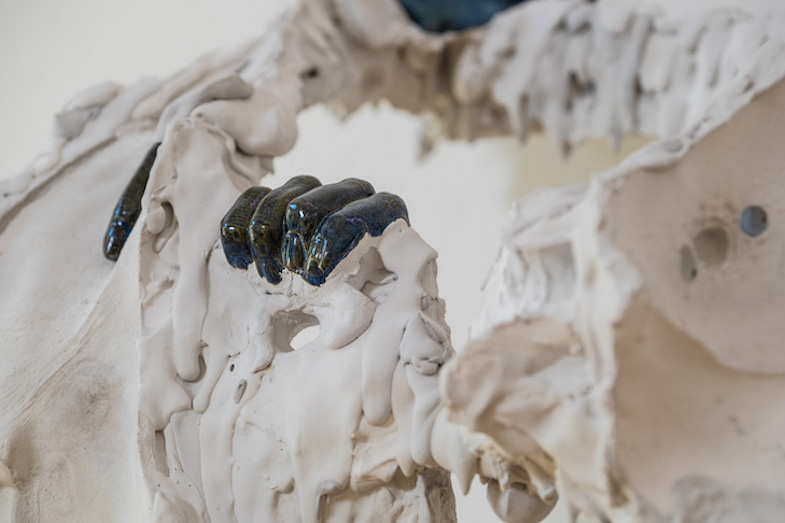
L’ESPRIT D’ESCALIER / NUDE DESCENDING A POOL LADDER (GABRIELLE), detail view, Juliana Cerqueira Leite & Zoë Claire Miller, glazed ceramic, metal, plaster, The Female Gaze – On Body, Love and Sex, Kunsthaus Erfurt, (c) Marcel Krummrich
So you’re saying that sometimes it seems that men like to stress their own genius more. Maybe women do not like to declare themselves as experts in their own field in general?
Zoe: I think on some level I do actually like doing that.
Juliana: I feel that in some work contexts women unfortunately become known as ‘difficult’ or ‘bitchy’ when they stress authority, and expertise is a type of authority. It’s taken a lot of bad experiences to learn that I’m just expected to be easier to work with than some of my male artist contemporaries. I had to develop a tough skin to be able to push for what I want in an exhibition, or making sure people honor loan agreements properly, that I get paid. But I have found that people are happy to help if you’re professional in being firm.
Zoe: Making art is so personal, it’s so close to your soul and ego – I don’t think there is any field where it could be more intimate, where what you’re doing professionally is YOU to such a degree.
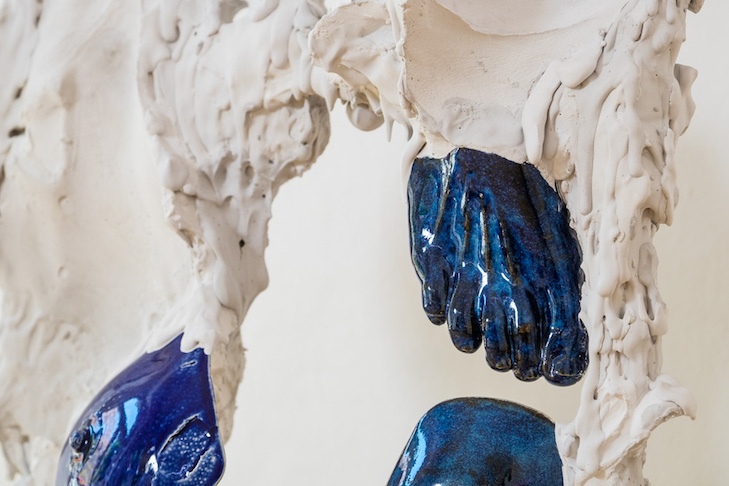
L’ESPRIT D’ESCALIER / NUDE DESCENDING A POOL LADDER (GABRIELLE), detail view, Juliana Cerqueira Leite & Zoë Claire Miller, glazed ceramic, metal, plaster, The Female Gaze – On Body, Love and Sex, Kunsthaus Erfurt, (c) Marcel Krummrich
It seems that getting together has empowered you on some level?
Zoe: Via collaboration we can create a void in all of the toxic structures surrounding the power dynamic aspects of what we are doing, creating a space that’s free of them.
Juliana: When you start to work collaboratively immediately you start to realize that you’re not making your work plus someone else’s work, you are making this third entity’s work. Like in one of these Japanese cartoons, where all the characters merge into this giant being that’s able to do what none of them could do by themselves. Together we form a new artist.

Manual Override, Juliana Cerqueira Leite & Zoë Claire Miller, plaster, glazed stoneware, glazed earthenware, amber gels, snakeskin pleather, metal, wood, vaseline, digital prints on chiffon, 2016. Installation view from Landing Strip, Neukölln (c) Michael Pohl
About the authorship: What makes a person the actual author? When it comes to your work, does it technically have to be you or could somebody else fill that place and replicate what you do?
Zoe: I think that you don’t really have a choice, at least when you’re working alone and creating work that is hand-crafted. I’ve never been in a position where I could tell assistants “Can you paint me a painting with mountains?” which I know that some commercially successful artists do.
Juliana: I kind of like the idea of messing with the notion of authorship, especially using the body. Authorship is something that is so connected to the mind but it’s the body that is the physical marker of an individual. Yet culturally we also think of the body as this kind of host for involuntary processes.
Zoe: Just like the body is involuntary social, even when the mind wishes to be solitary.
Juliana: I like the idea of challenging authorship by including the body in my own work already and Zoe also includes some prostheses and body parts in her work.
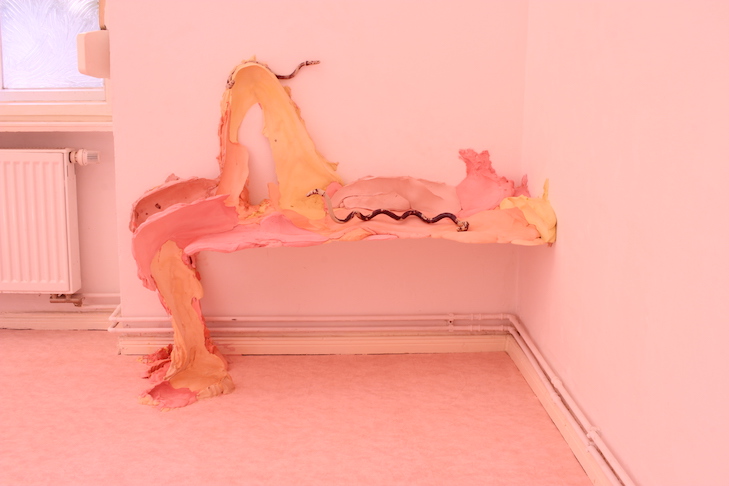
Ménage à Moi, Juliana Cerqueira Leite & Zoë Claire Miller, plaster, pigments, metal, glazed stoneware, 95 x 51 x 127 cm, 2016. Exhibition View from Landing Strip in Neükolln, (c) Michael Pohl
So did you at some point consider using someone else entirely for your work?
Juliana: We were in a way using certain themes where a surrogate would have been conceptually interesting, but then we moved away from that idea. For example, choreographer Martha Graham, when she stopped dancing – her choreographies survive because her company continued performing her choreographies. Part of me wonders, if my role as a sculptor could become more instructional and could then be performed by other people. But that changes the power dynamic completely.
Zoe: Also, the materials we’re working with are so sensitive, they react so much to the body and have certain rhythms and qualities. The way that they move and how they can be manipulated depends so much on your sense of feel and on time passing and that’s something that is really hard to manage precisely if you’re not there with your body, your sense of touch and your corporeal experience.
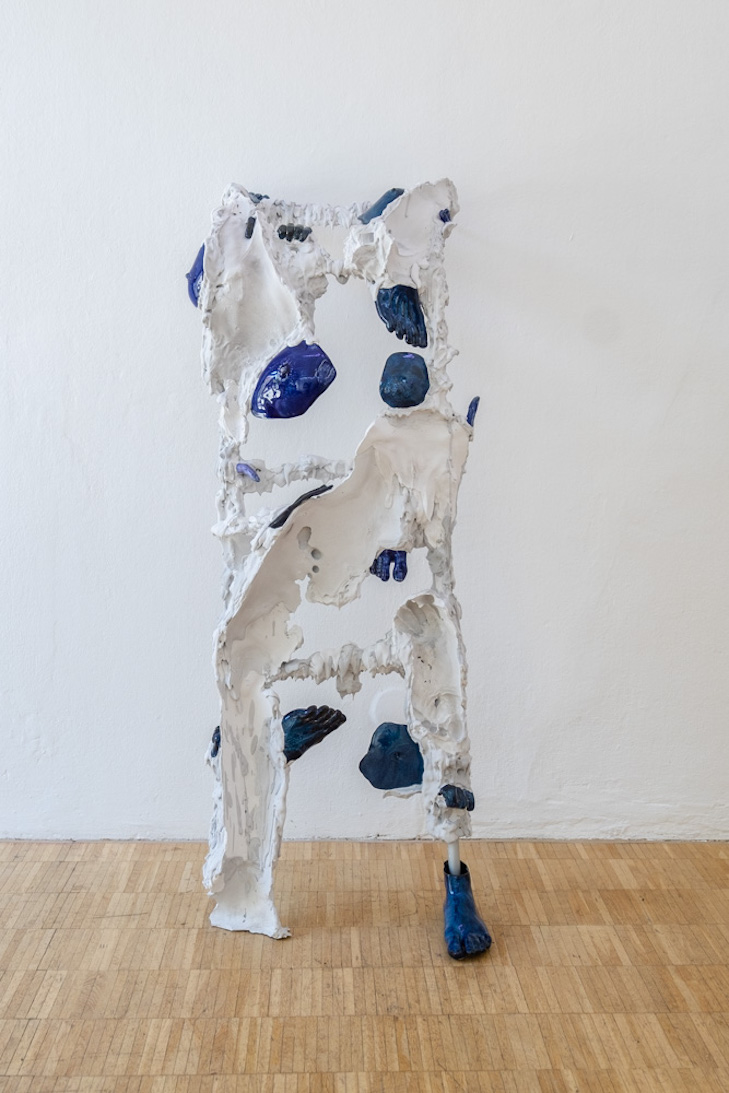
L’ESPRIT D’ESCALIER / NUDE DESCENDING A POOL LADDER (GABRIELLE), installation view, Juliana Cerqueira Leite & Zoë Claire Miller, glazed ceramic, metal, plaster, The Female Gaze – On Body, Love and Sex, Kunsthaus Erfurt, (c) Marcel Krummrich
Talking to you, I feel like you see very much eye to eye. Sometimes you come across collaborations or structures between two people, where that is not the case, but rather there is a certain hierarchy.
Zoe: We were talking before about how we’re a power couple without sex.
Are you planning on continuing to work together in the future? What’s next for you?
Juliana: We are planning an installation in November in NY. It’ll be at a bar called Beverly’s.
—
—
HAUS AM LÜTZOWPLATZ BERLIN
Eröffnung: Freitag, 4. Mai 2018, 19 Uhr
Ausstellung: 5. Mai–17. Juni 2018
Ort: Studiogalerie – Haus am Lützowplatz, Lützowplatz 9, Berlin
Öffnungszeiten: Dienstag – Sonntag, 11 – 18 Uhr
http://www.hal-berlin.de/ausstellung/kuratiert-von-isabelle-meiffert/
Author: Achan Malonda for ARTBerlin
Header Photo: A NIGHT WITH THE GIRLS; L’ESPRIT D’ESCALIER / NUDE DESCENDING A POOL LADDER (GABRIELLE), MOTHERBOARD / MAKUNAIMA, Juliana Cerqueira Leite & Zoë Claire Miller, 2018, ortsbezogene 5-teilige Installation, mixed media. Exhibition View from The Female Gaze – On Body, Love, and Sex, Kunsthaus Erfurt, (c) Matthias Krummrich

